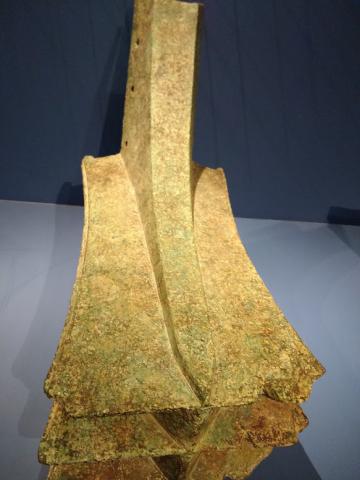4.29.22 The Battle of Aegates
Presenting history with some teeth in it.
Back in the early ‘aughts, on the western end of Sicily, an archaeologist named Sebastiano Tusa was visiting a friend in the little town of Trapani. Tusa was taking a break from his underwater explorations off the island of Favignana, which lies along the ferry route between Palermo and Tunis. His friend showed him his home and his prized possession, a huge hunk of corroded bronze shaped like a beak. He said he had received this odd thing from a local fisherman, as payment for a dental procedure he’d performed on the man. Tusa was astounded. And he knew instantly what he was looking at: it was the bronze prow of an ancient warship…
Way back in 264 BC, Rome’s power was limited to the Italian mainland. But to the south and west there was a larger, sea-going power, the Carthaginian Empire, whose home base was across the water in today’s Tunis. In between them was the island of Sicily, which was key to controlling naval traffic across the Mediterranean. In order to catch up with their stronger rivals, Rome needed a navy. So they captured and copied a classic Carthaginian vessel called a quinquereme, which was a galley about 150 feet long and 16 feet wide, propelled by multiple sets of 5 oars, and which featured a heavy bronze beak on the bow called a rostrum. The strategy was to use the rostrum to rake and destroy the enemy’s oars, or to ram their vessel to board it or sink it…
Rome’s creation of a navy led to a conflict which we now call the First Punic War.
The Greek historian Polybius tells us that this conflict lasted until 241 BC, when the Roman and Carthaginian fleets met at the decisive Battle of Aegates, off the west coast of Sicily, presumably near the island of Favignana. That’s what had brought Tusa to those shores. But after discussions with the dental patient, Tusa spoke with other local fisherman, who reported they had seen many other bronze rostrums, and even a line of ancient metal anchors, in the waters off the coast of a different island, Levanzo, about 15km to the north. Tusa and his team headed that way…
In the battle, Carthage had greater numbers – 250 ships to Rome’s 200 – and they sailed into Sicily from the west with the wind at their backs. In desperation, the Romans stripped their quinqueremes of their sails and masts, cut themselves loose from their heavy anchors, and rowed through choppy seas straight at the enemy. With much improved mobility, the Romans rammed and destroyed 30 Carthaginian ships, captured 70 more, and took 10,000 prisoners. It was a rout that ensured Roman victory in the war, gave them control of not only Sicily but also Corsica and Sardinia, and catalyzed the rise of the Roman Empire…
Off the coast of Levanzo, Tusa’s team hit the underwater jackpot. They found 100 heavy metal anchors, all perfectly aligned on the sea floor, just sitting there since the moment two millenia earlier when the Romans cut loose and rowed forward. Over the years, Tusa’s team has found over 25 fallen rostrums. Amazingly, many of them are filled with coins and other man-made objects collected by resident octopi who have a habit of gathering trinkets. New technologies have helped them find many other things like helmets, projectiles, and other artifacts that have helped them fully understand this seminal moment in history…
Sadly, the work continues without Sebastiano Tusa. He died in a plane crash in 2019, ironically on March 10, the same date as the battle. This year, to honor that date and his work, the day was declared Sicilian Cultural Heritage Day, and a new exhibition opened in Palermo which celebrates Tusa’s amazing discoveries.
